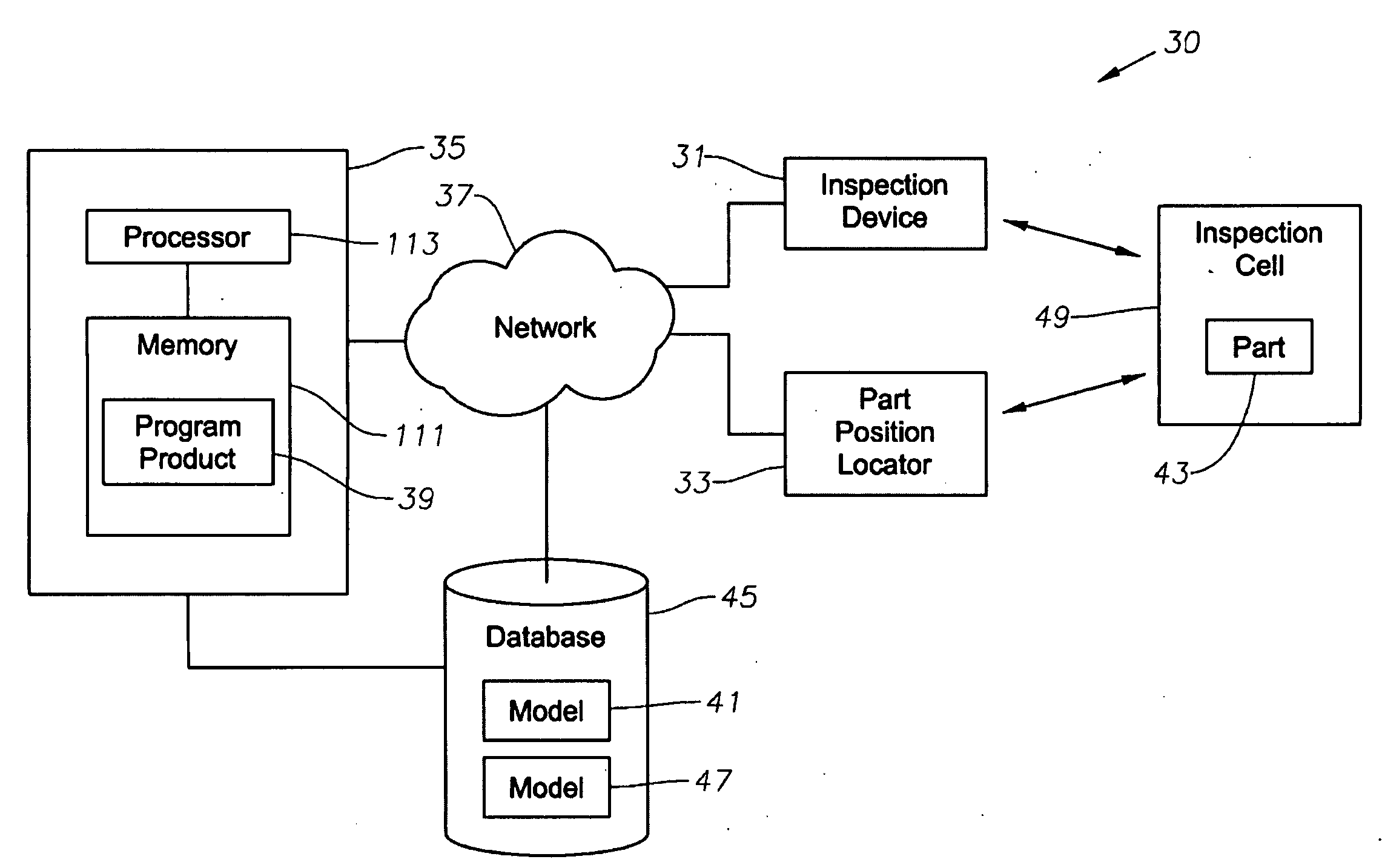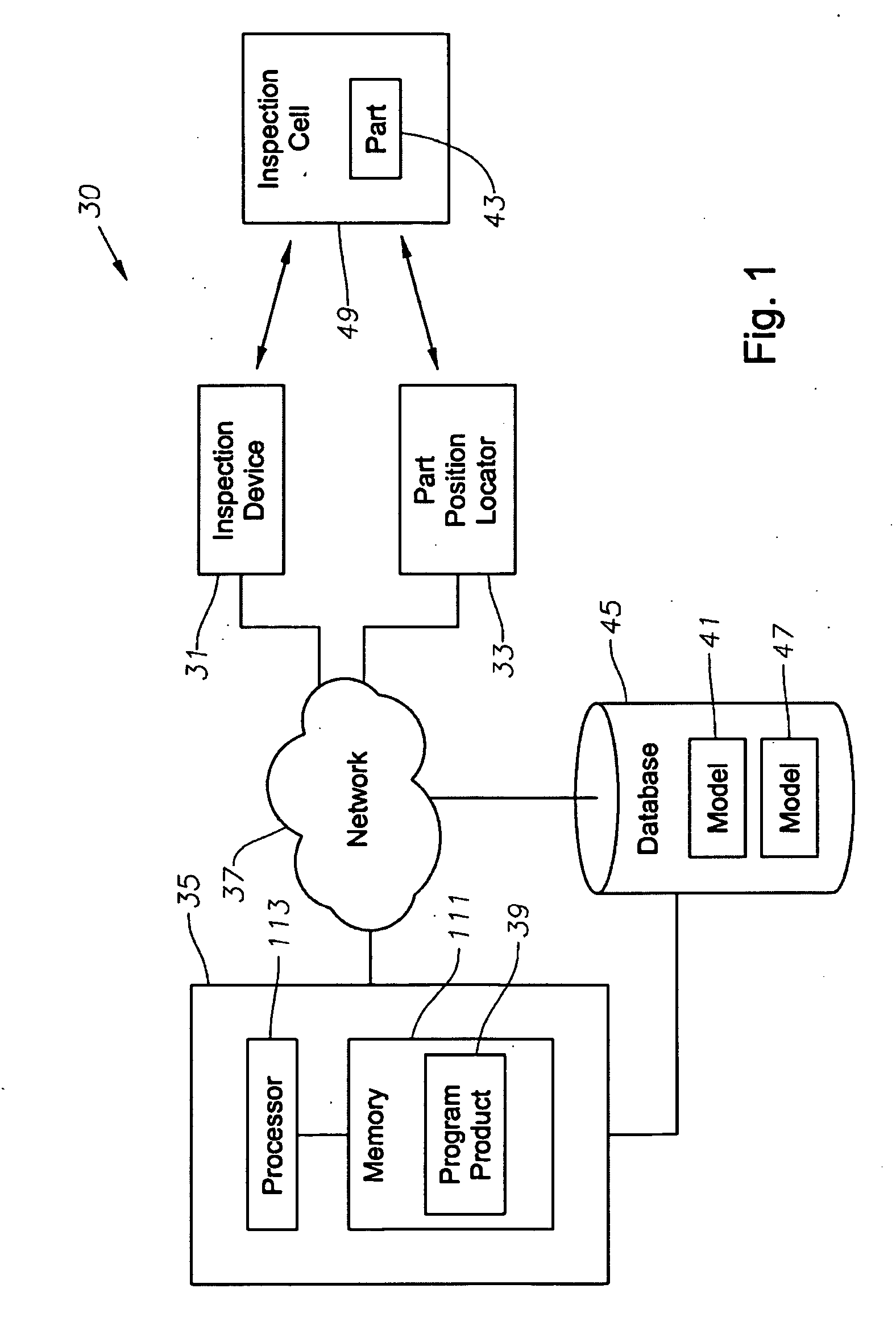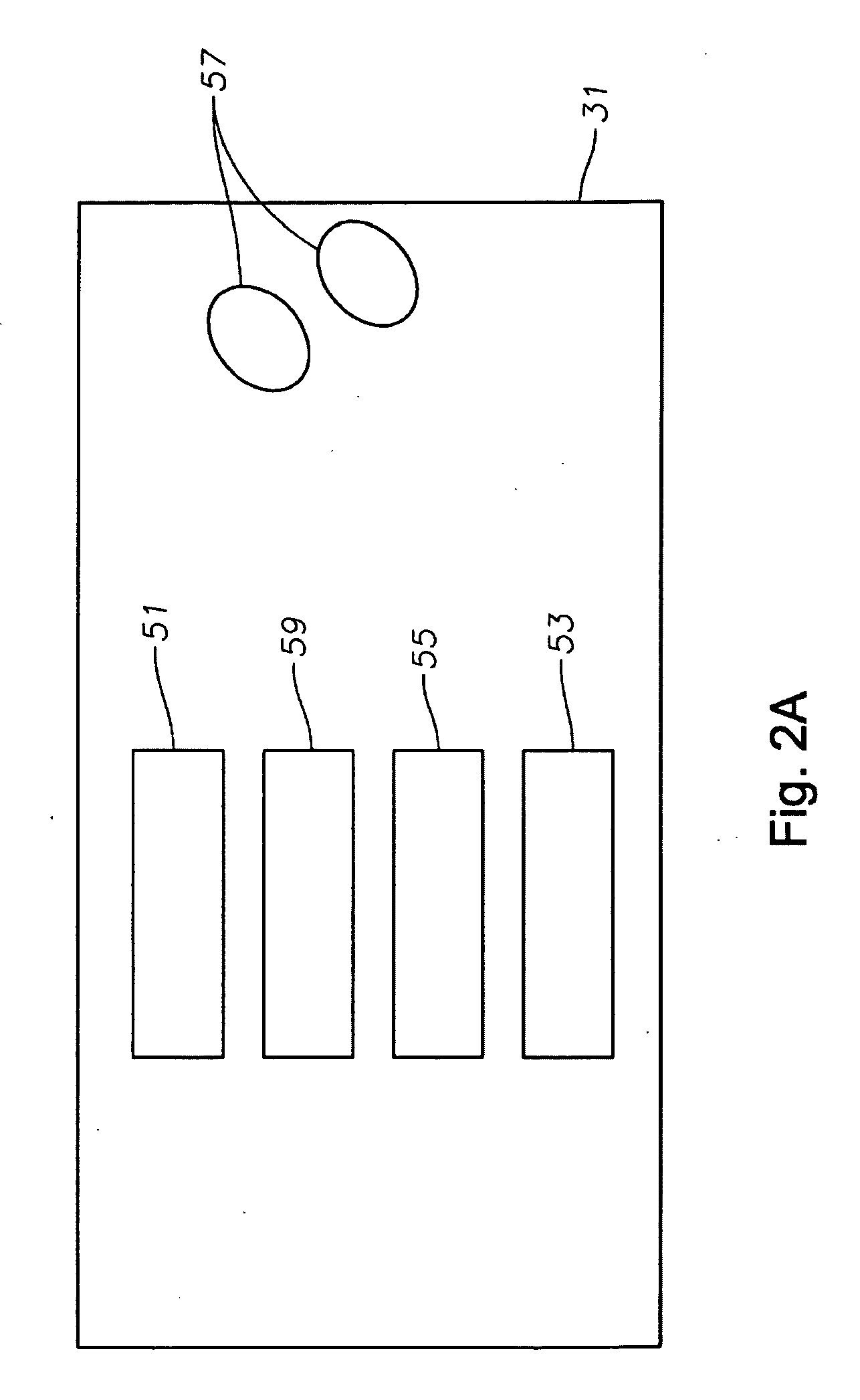[0012]In view of the foregoing, embodiments of the present invention advantageously provide a system, program product, and methods to perform automated three-dimensional model registration, which allows both noisy and incomplete sensor data to be automatically registered without manual designation of the areas of correspondence and without ad hoc filtering of the data sources. Embodiments of the present invention also advantageously provide a system, program product, and methods to perform automated three-dimensional model registration, which allow noisy sensor data to be used, as it is, without modification, without identifying areas of interest and without an identification of
initial point correspondences between the model and the range (sensor) data. Embodiments of the present invention also advantageously provide a system, program product, and methods which provide for acquisition of a model and a set of sensor data, positioning the model data close to the correct position with respect to the sensor data, and application of an
algorithm on the model and sensor data whereby the final transformation represents the registration of the model to the sensor data. Embodiments of the present invention improve upon application of the “
Iterative Closest Point” (ICP)
algorithm by providing a mechanism to automatically reject outliers and bridge holes in noisy and incomplete sensor data, for example, using two applications of the ICP
algorithm, e.g., swapping the source and target.
[0015]The operation of performing a registration of the three-dimensional model to the range data can include utilizing data points on the model of the part defining model data as a source and the range data as a target, and determining the set of points in the range data having a
high probability of corresponding to actual points on the model and a transformation (T1) therebetween. The set of points in the range data having a
high probability of corresponding to actual points on the model can be a set of points in the range data that are closest to corresponding points in the model as calculated using an
iterative closest point algorithm. The operation of performing a registration of the identified set of points in the range data having a high correspondence probability to the three-dimensional model can also include utilizing the identified set of points in the range data as a source and the model data as the target, and determining a transformation (T2) therebetween, and the operation of aligning can include determining a composition of the transformation (T1) and an inverse of the transformation (T2) to register the part with the three-dimensional model of the part. Advantageously, the registration of the part with the three-dimensional model of the part provides a robust match independent of both an existence of outliers in the range data and
missing data in the range data. Further, advantageously, the operation of aligning the three-dimensional model of the part to the measured
pose of the part within the inspection
cell is performed without pre-filtering the range data to remove outliers or a pre-accounting for
missing data.
[0016]Embodiments of the present invention also include methods of performing automated three-dimensional
image registration of a part remotely positionable within an inspection cell. According to an embodiment of such a method, the method can include the steps of determining a location of a plurality of points on at least one surface of a part to be inspected when positioned within the inspection cell defining range data, identifying a set of points in the range data having a
high probability of corresponding to data points on a three-dimensional model of the part to be inspected, determining a first transformation (T1) between the data points on the three-dimensional model and the set of points in the range data having a high probability of corresponding to actual points on the model, such as, for example, to remove outliers, determining a second transformation (T2) between the set of points in the range data having a high probability of corresponding to actual points on the model and the data points on the three-dimensional model, such as, for example, to account for
missing data-removes bias if model covers more of the parts and the range data. The steps can also include determining a composition of the first transformation with an inverse of the second transformation to thereby align the three-dimensional model with the part at part
pose, and associating gathered inspection data onto the three-dimensional model at the part pose to provide enhanced
visualization of the inspection data.
[0017]Embodiments of the present invention also include computer readable media that is readable by a computer to perform automated three-dimensional image registration of a part. According to an embodiment of the computer readable medium, the computer readable medium can include a set of instructions that, when executed by the computer, cause the computer to perform the operations of retrieving or otherwise receiving model data for a three-dimensional model of the part, retrieving or otherwise receiving data representing points on at least one surface of a part when in a measured pose within the inspection cell defining range data, aligning the three-dimensional model of the part to the measured pose of the part, associating gathered inspection data onto the three-dimensional model at the part pose to provide enhanced
visualization of the inspection data, and mapping the inspection data into the model at the part pose responsive to registration of the part to the three-dimensional model of the part.
 Login to View More
Login to View More  Login to View More
Login to View More 


